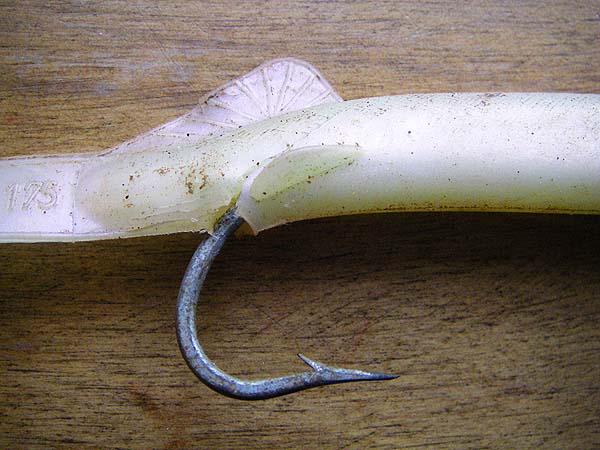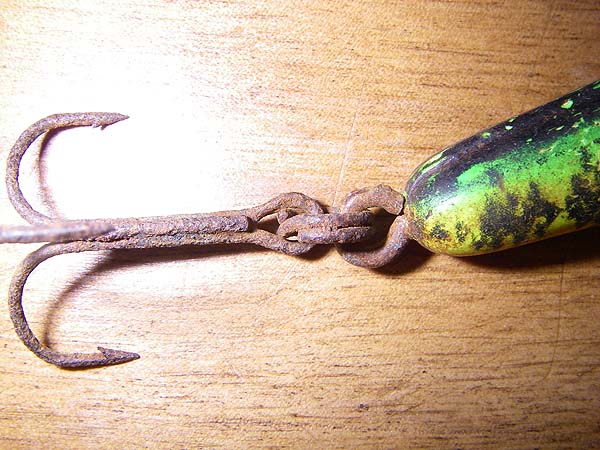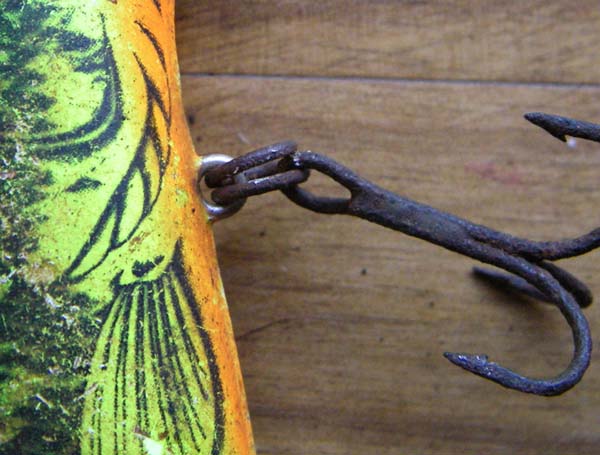 '
'Information Page.
Lures and 'light tackle'.
It’s over thirty years since I wrote this piece but with a few alterations, it still seems relevant to present day fishing :-
When I discuss lure fishing with other anglers they frequently express concern at the possibility of losing fish. The usual comment is that they would not like to think of a fish swimming round with its mouth sealed by a treble hook. Obviously this can happen, but it’s rather rare if suitable tackle and tactics are used.
I will assume that the tackle used for deep-water pirking is generally hefty enough to avoid breakage, except when you foul the sea-bed or superstructure of a wreck. Also, it’s not worth worrying about anyone who uses ‘silly tackle’ in the hunt for glory or prize money.
If rod and reel are suited to fish and fishing conditions, if line strength is reasonable and if the angler ties a decent knot and checks his line for cuts and nicks, then the only weaknesses may be swivels, split rings and the hooks themselves. To be fair it’s a bit more difficult to detect faults in braided lines than in monofilament but modern braids are so strong that it shouldn’t be a problem. The argument that fish caught on light line give ‘better sport’ is simply not true. The length and speed of runs, the scream of a clutch and the bend in a rod are determined only by the amount of resistance you want to apply at your end. In other words if you ‘pretend’ that you are using two pound line by using a light clutch setting or minimal finger pressure, it will make no difference to the ‘fun and games’ if the line is fifty pound BS. It just means that you won’t get broken.
To return to lures, they generally work best when they are unhampered by stiff lines or big swivels. Fortunately braid is very thin and supple and even the smallest swivels (30-40lb BS) are generally strong enough for conventional spinning tactics.
The same is not true of split links. The design of some links leaves much to be desired but, that apart, many of them are subject to metal fatigue after a session involving a number of lure changes. All links lose there elasticity and become unreliable when they are affected by rust, so change them frequently (stainless-steel versions are a bit more durable but will still fatigue).
Lure hooks present a number of problems, but the principals should be the same as for bait fishing. Hooks must be sharp, fine in the wire, short in the point and have barbs as small and neat as possible.
On some lures, such a Redgills, Eddystones, shads and the like, the large hooks provided to ‘fit the lure’, and/or provide weight, are far coarser than is necessary to land any fish that swims. If the hooks are not integral to the lure it needs little ingenuity to change them for more suitable ones while still retaining the balance and action.
Spoons, Mepps-type spinners, and plugs are usually armed with trebles of varying quality. If necessary, replace them with good-quality trebles or, if it is appropriate and you prefer it, with singles.
Some plugs can’t be armed with conventional single hooks so, if you are really concerned, there is nothing to stop you cutting the least effective points from the treble. If the resulting loss of weight effects the action of the lure add a little lead wire to the hook shank or replace the hook with one a size or two larger.
If you have any comments or questions about fish, methods, tactics or 'what have you.'get in touch with me by sending an E-MAIL to - docladle@hotmail.com
Crude hook.
 '
'Non stainless.
 '
'Strained.
 '
'Better.
 '
'